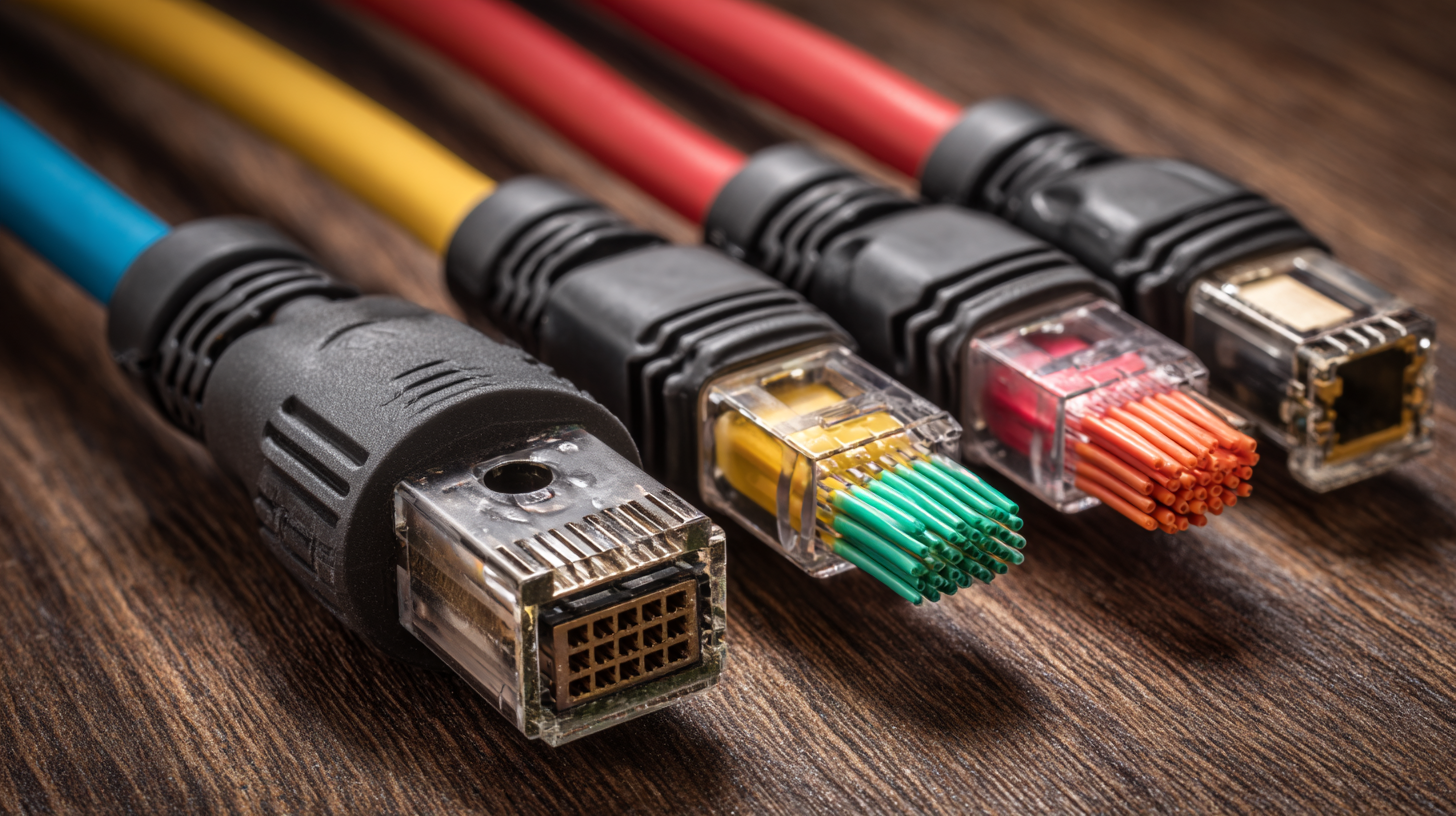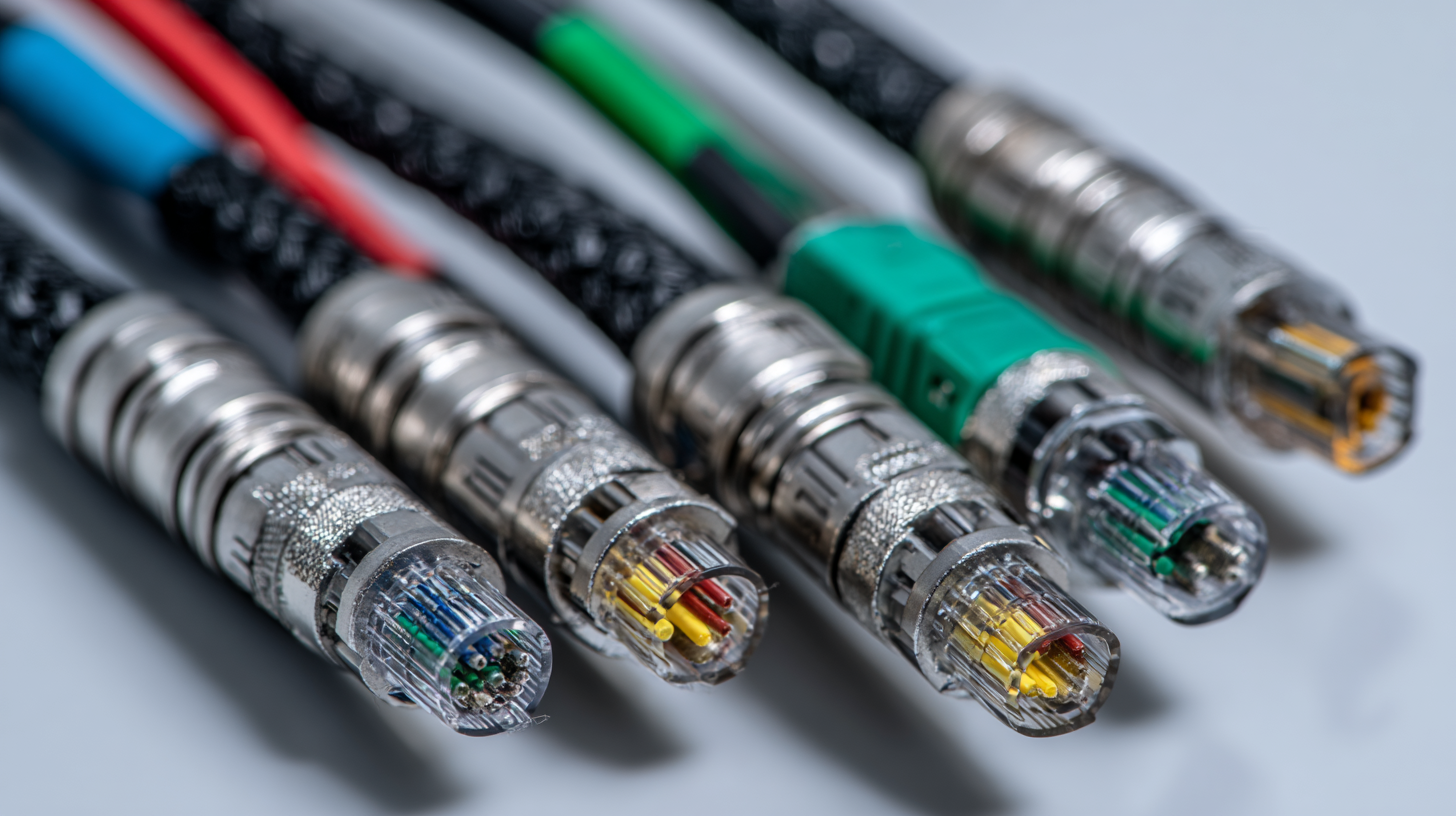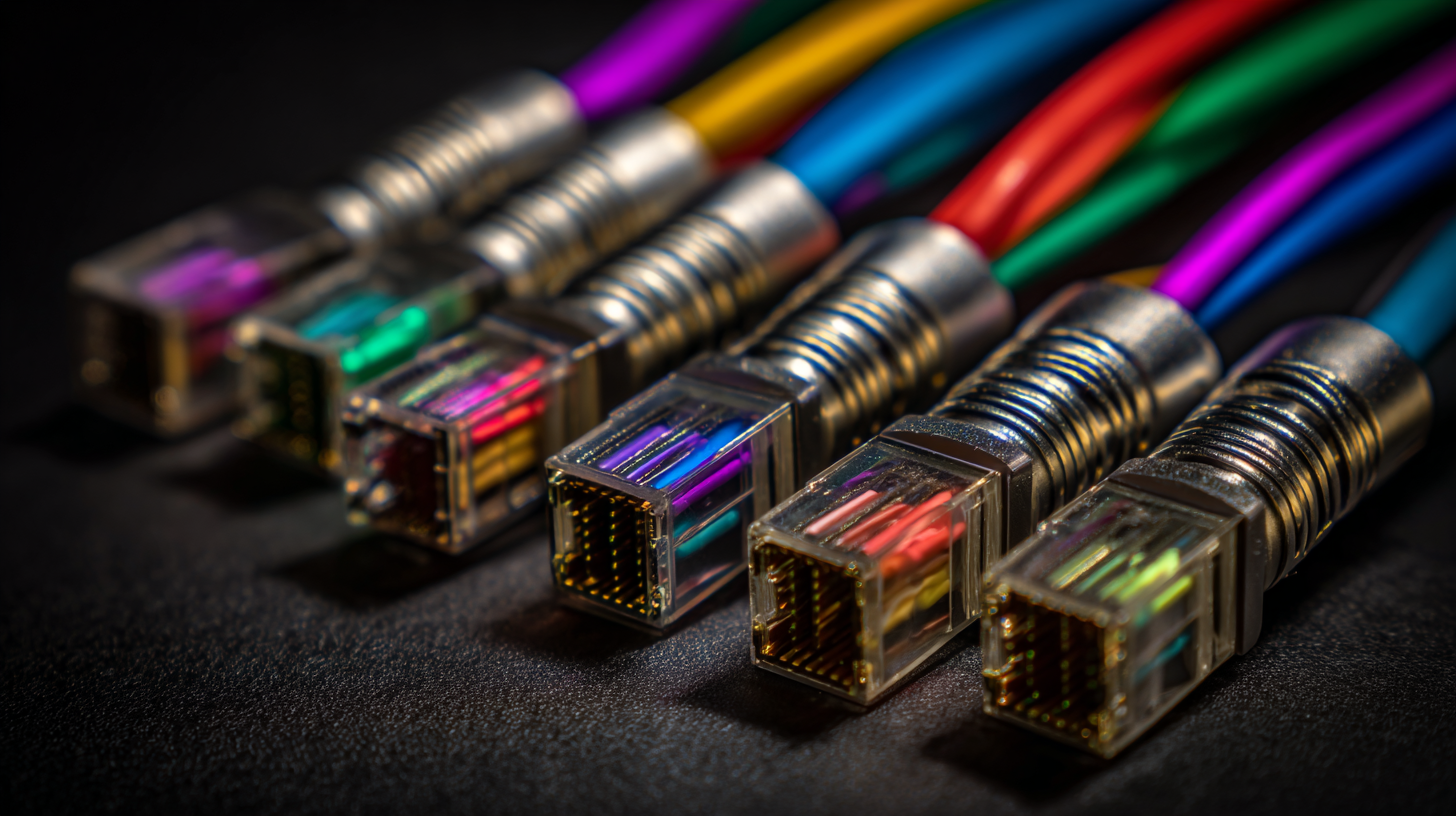Leave Your Message
In an era where data transmission speed and efficiency are paramount, the adoption of high-performance interconnect solutions like the 10G SFP+ Active Optical Cable has become indispensable for modern network infrastructures. According to a recent market report by ResearchAndMarkets, the demand for active optical cables is projected to exhibit a significant CAGR of over 25% through 2025, driven by the increasing need for faster data rates in data centers, enterprise networks, and high-performance computing environments. These cables not only provide exceptional data transfer speeds but also offer lower power consumption and improved flexibility compared to traditional copper connections. As the technology landscape continues to evolve, understanding the mechanics and applications of the 10G SFP+ Active Optical Cable will be critical for network engineers and IT professionals looking to optimize their systems for tomorrow’s data challenges.

10G SFP+ Active Optical Cables (AOC) are advanced connectivity solutions that leverage optical technology for high-speed data transmission at 10 Gbps over short distances. Utilizing multimode fiber, these cables convert electrical signals into optical signals, allowing them to transmit data over distances of up to 100 meters. According to a report by MarketsandMarkets, the global market for optical cables, including AOCs, is expected to reach $25 billion by 2025, driven by the rising demand for high-speed connectivity in data centers and enterprise networks.
The working principle behind 10G SFP+ AOCs is based on the use of semiconductor lasers that emit light through the fiber optic core. This process minimizes signal loss and electromagnetic interference, making AOCs particularly suitable for environments where performance and reliability are critical. A recent study by ResearchAndMarkets indicates that the adoption of AOCs in data centers has increased by over 30% in the past few years, reflecting their growing importance in meeting the high bandwidth requirements of modern applications such as cloud computing, 4K video streaming, and big data analytics.
In modern networking environments, the adoption of 10G SFP+ Active Optical Cables (AOCs) has become increasingly prevalent, largely due to their significant advantages over traditional copper solutions. According to a report by IDC, the demand for high-speed data transfer is projected to grow at a CAGR of 23.6% from 2021 to 2026, emphasizing the necessity for efficient and scalable connectivity solutions. AOCs, with their ability to support longer distances—up to 300 meters for multimode fiber—enable data centers and enterprise networks to expand their infrastructure without compromising on speed or signal integrity.

One of the key benefits of 10G SFP+ AOCs is their lightweight design and lower power consumption compared to their copper counterparts. Research shows that AOCs can consume up to 50% less power, which not only reduces operational costs but also contributes to greener technology practices in data center operations. Additionally, they offer superior performance in terms of signal quality, minimizing latency and bit errors during data transmission. With organizations increasingly relying on real-time data analytics and cloud computing, the role of efficient cabling solutions, like 10G SFP+ AOCs, cannot be overstated in ensuring seamless connectivity across modern networks.
When comparing 10G SFP+ Active Optical Cables (AOC) with traditional copper cables, several key factors emerge. A significant advantage of AOC technology is its ability to support longer distances with minimal signal degradation. According to a report by the Fiber Optic Association, AOCs can transmit data over distances up to 300 meters, making them ideal for data centers and large networks where distance can hinder performance. In contrast, traditional copper cables are generally limited to around 30 meters for optimal performance, which can significantly restrict design and setup flexibility in high-speed networks.
In terms of performance, AOC cables also boast a lower latency and higher bandwidth. Research from Dell'Oro Group indicates that the market for high-speed AOCs is expanding rapidly, projected to reach $1.2 billion by 2025, as enterprises seek to upgrade their infrastructures. Additionally, with the rise of cloud computing and big data applications, organizations are increasingly transitioning to optical solutions to meet their evolving needs. This shift not only enhances data transmission speed but also reduces electromagnetic interference, a common limitation faced by copper cabling. The trend highlights a pivot towards AOC as a preferred choice for modern network demands.
This chart presents a comparative analysis between 10G SFP+ Active Optical Cables and Traditional Copper Cables, illustrating their cost, maximum distance, weight, power consumption, and latency.
10G SFP+ Active Optical Cables (AOCs) have emerged as a crucial technology across various industries, enabling high-speed data transfer over longer distances with superior efficiency. One of the primary sectors leveraging these cables is the data center industry, where the demand for rapid data transmission is paramount. AOCs offer a lightweight and flexible solution that simplifies connectivity while maintaining high performance, making them ideal for interconnecting servers, switches, and storage devices in densely packed environments.
In addition to data centers, the telecommunications industry has recognized the value of 10G SFP+ AOCs for expanding network infrastructure. These cables support high-bandwidth applications and provide robust performance in scenarios such as metropolitan area networks (MANs) and wide area networks (WANs). By facilitating reliable connections over extended distances, AOCs play a vital role in enhancing communication networks, ensuring that enterprises can meet the increasing demands for bandwidth and connectivity in today’s digital landscape.
| Industry | Application | Cable Type | Distance Range | Key Features |
|---|---|---|---|---|
| Data Centers | High-speed data transmission | Active Optical Cable | Up to 100 meters | Low power consumption, flexible design |
| Broadcasting | Live event streaming | Active Optical Cable | Up to 300 meters | High durability, lightweight |
| Telecommunications | Network infrastructure | Active Optical Cable | Up to 150 meters | Robust, reliable signal integrity |
| Healthcare | Medical imaging systems | Active Optical Cable | Up to 50 meters | EMI shielding, dependable performance |
| Education | Campus networking | Active Optical Cable | Up to 100 meters | Cost-effective, easy installation |
The evolution of 10G SFP+ Active Optical Cables (AOCs) is set to redefine data transmission in various industries. As we look to the future, innovations in AOC technology promise enhanced bandwidth capabilities, reduced latency, and increased energy efficiency. According to industry reports, the demand for high-speed data transfer solutions is expected to grow by over 20% annually, driven by cloud computing and the rise of smart home devices.
Tips for optimizing your infrastructure include ensuring compatibility with existing network systems and considering future scalability requirements. AOCs not only deliver exceptional performance over longer distances compared to traditional copper cables but also offer significant weight reduction, making installation more manageable. Regular updates to your network hardware can accommodate emerging technologies, keeping your systems up to date with the latest advancements.
Moreover, the integration of advanced materials and manufacturing techniques is poised to enhance the durability and reliability of AOCs. This not only extends their lifespan but also reduces overall operational costs. As organizations increasingly embrace fiber-to-the-home solutions, understanding these technological advancements will be essential for leveraging the benefits of 10G SFP+ AOCs effectively.

